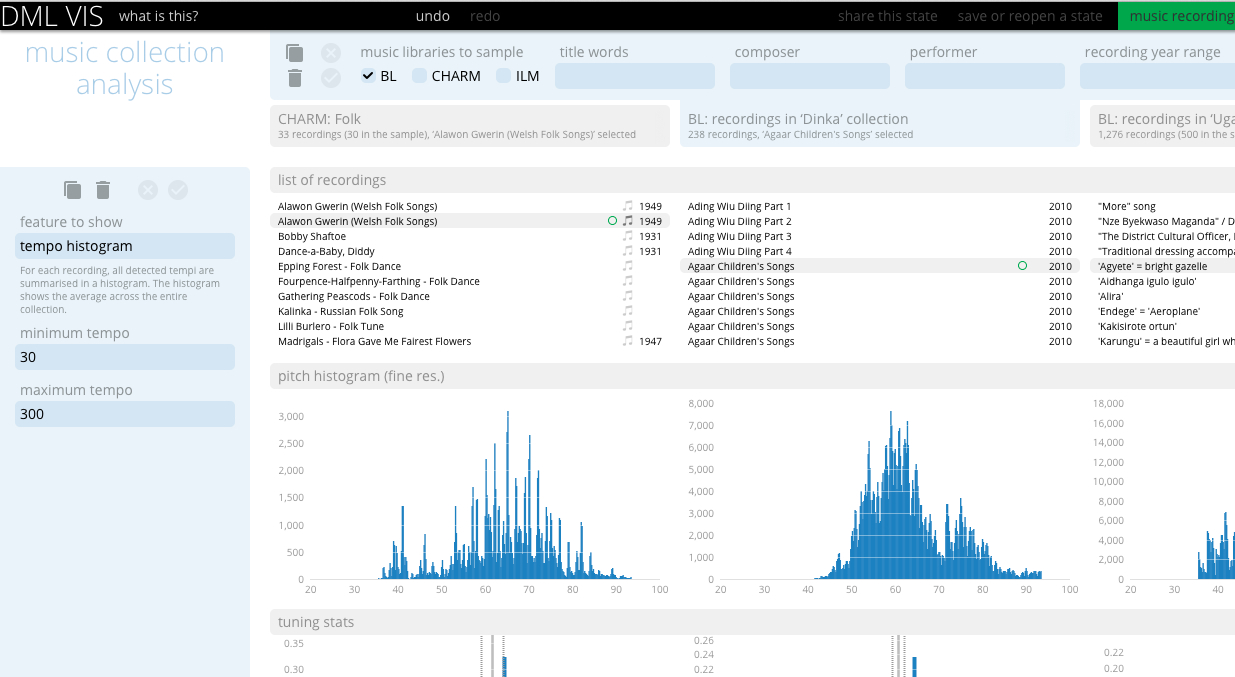Below we provide a list of git/mercurial/package repositories where we publish the code underlying the DML system. All code is hosted in mercurial repositories at code.soundsoftware.ac.uk under the GPLv3 license.
The cliopatria repository contains the implementation of the information and results management system and API. The source code can be found here:
hg clone https://code.soundsoftware.ac.uk/hg/dml-open-cliopatria.
The source for the DML Vis is hosted here:
We welcome contributions towards the code. If you use the code for a scientific publication, you can cite […]. Tools to work with the mercurial version control system are available at https://www.mercurial-scm.org/, with a GUI at EasyMercurial.


